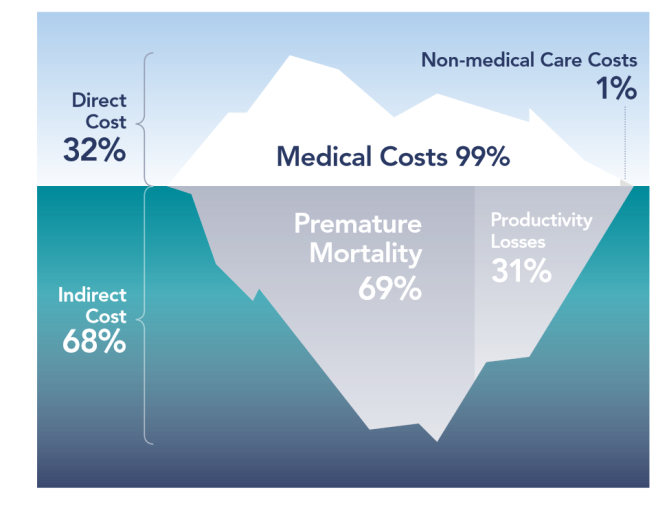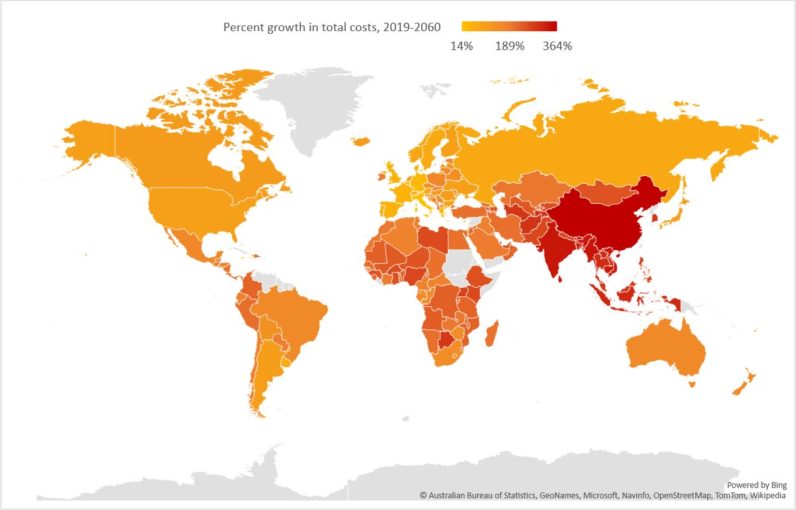
Two out of five people in the world are currently overweight or obese (NCD Risk Factor Collaboration, 2022). Yet, the economic impact of these conditions is not fully measured. For the first time, a recent study has estimated the economic impact of overweight and obesity for 161 countries. This cost is currently more than 2% of global Gross Domestic Product (GDP) and is expected to exceed 3% of GDP by 2060, particularly in low-income countries. These new data underline the urgency for investing in systemic and sustainable policies to tackle the underlying causes of overweight and obesity. Aprifel shares this ambition, which it has always supported through its actions.
Obesity affects the quality of life, health and potential of those affected. It is a major risk factor for many non-communicable diseases such as cardiovascular diseases, type 2 diabetes, cancers, and could also negatively impact mental, psychiatric, and musculoskeletal health (WHO, 2021). Beyond the individual consequences of obesity, the global increase in its prevalence is particularly concerning for our societies, due to its critical influence on population health and health care expenditures (French Economic report n°179, 2016). Most of the data on the economic impact of overweight and obesity comes from high-income countries. Therefore, they are inconsistent with the global picture. To address this, the study conducted by Okunogbe et al. is the first to provide global information for 161 countries using an approach based on direct and indirect health costs.
The cost of overweight and obesity is estimated at 2.19% of global GDP
According to this work, the economic impact of overweight and obesity represents 2.19% of global GDP in 2019. This share varies between countries and ranges from 0.87% in low-income countries to 2.46% in high-income countries.
The economic loss per capita averages $6 in low/middle-income countries and can reach $1,100 in high-income countries. These variations between countries can be explained by differences in income and GDP between regions of the world.
Economic impact is even more significant if we consider the costs associated with the increased life expectancy of overweight/obese people as a result of improved quality of care.
Indirect costs are more significant than care-related costs
Most studies have been limited to assessing the direct costs of obesity and overweight. The direct costs are almost entirely (99.8%) related to medical care and represent only a small fraction of the total societal cost (32%).
Thus, this work indicates that indirect costs represent on average 68% of the total cost depending on the region of the world. Premature mortality accounts for a significant share of these costs (approximately 70% of indirect costs).

Costs will explode by 2060, especially in developing countries
If current trends are maintained, most countries are expected to have overweight and obesity prevalence levels of more than 70% of the population by 2060 (World Obesity Federation, 2022). The highest prevalence levels – over 88% – would be mainly found in low/middle-income countries.
Thus, the increasing prevalence of obesity and the demographic and economic changes we are facing are likely to greatly increase the economic impact of overweight and obesity worldwide.
Authors estimate that this impact could represent 3.29% of global GDP by 2060, with a larger increase concentrated in low-income countries. Between 2019 and 2060, total economic costs will increase fourfold in high-income countries, while they will be 12 to 25 times higher in low-income countries.

Preventing obesity is a profitable investment
Although relevant measures have already been implemented to limit the increase in the overweight and/or obesity prevalence, the authors underline that they remain insufficient given the previous findings.
Scenarios explored in this study call for increased investment in prevention. Indeed, according to this work, reducing the prevalence of obesity by 5% between 2020 and 2060 would save an average of $429 billion per year worldwide.
This estimation is consistent with the 2019 work of the OECD :
Thus, this study highlights the economic urgency of increasing investments in sustainable, systemic public policies to address overweight and obesity. Transforming food systems, so that the healthiest choice becomes the easiest was a recommendation at the heart of the EGEA 2018 conference outcomes.
There is a common misconception that overweight and obesity affect only high-income countries. But in fact, many middle-income countries are among the regions with the highest obesity rates (Okunogbe et al, 2022). In addition, 77% of deaths from non-communicable diseases related to overweight and obesity occur in developing countries (Murray et al, 2020).




